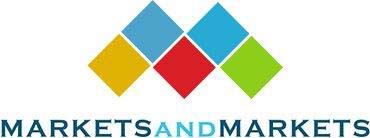The global Blood Collection Devices Market is experiencing robust growth driven by the rising need for efficient diagnostic solutions, emergency care preparedness, and expanding healthcare access worldwide. Valued at US$8.61 billion in 2024, the market increased to US$9.13 billion in 2025 and is projected to reach US$13.02 billion by 2030, registering a strong CAGR of 7.4% during 2025–2030.
This growth is underpinned by increasing cases of infectious and chronic diseases, the growing number of hospitals and surgical centers, rising demand for blood donations, and the rapid adoption of advanced diagnostic technologies such as liquid biopsies. Collectively, these forces are strengthening market demand, enhancing diagnostic accuracy, and supporting improved patient outcomes globally.
Download PDF Brochure : https://www.marketsandmarkets.com/pdfdownloadNew.asp?id=39733117
Key Market Drivers
1. Rising Prevalence of Infectious & Chronic Diseases
With chronic conditions—such as diabetes, cardiovascular diseases, and cancer—on the rise, the need for frequent and accurate diagnostic blood tests has increased significantly. This is a major contributor to the growing demand for blood collection devices.
2. Growth in Hospitals, Surgical Centers & Emergency Care
The expansion of healthcare infrastructure, particularly in emerging markets, is fueling the demand for blood bags, tubes, needles, and collection systems. Trauma cases and emergency procedures further amplify the need for rapid, safe, and accurate blood collection.
3. Emergence of Liquid Biopsy Technologies
Liquid biopsy tests rely heavily on high-quality blood samples for early detection of conditions such as cancer. The growing adoption of these tests is driving demand for advanced blood collection systems that maintain sample integrity and stability.
4. Increasing Blood Donations & Awareness Campaigns
Government and NGO-led blood donation drives are boosting demand for blood bags and consumables, with particularly strong momentum seen in Asia Pacific, Latin America, and Africa.
Market Segmentation Insights
By Product
The market includes:
-
Blood collection tubes
-
Needles & syringes
-
Blood collection systems/monitors
-
Blood bags
-
Lancets
Largest Segment (2024): Blood Collection Tubes
Blood collection tubes dominated the market due to:
-
Ability to collect multiple samples from a single patient
-
Inclusion of clot activators or anticoagulants for diverse testing needs
-
Standardization in sample collection practices
-
High usage in hospitals, diagnostic labs, and blood banks
By Application
The market is categorized into:
-
Diagnostic applications
-
Therapeutic applications
Largest Segment (2024): Diagnostic Applications
The diagnostic segment held the largest share, driven by:
-
Higher prevalence of chronic diseases requiring routine blood testing
-
Increased corporate and personal health checkups
-
Advancements in diagnostic technologies
-
Emphasis on preventive healthcare
-
Integration of automated and safety-enhanced blood collection systems
Regional Analysis
North America Leads the Global Market (2024)
North America—particularly the US and Canada—accounted for the largest share due to:
-
High prevalence of lifestyle diseases and blood disorders
-
Advanced diagnostic and clinical infrastructure
-
Strong presence of leading market players
-
Increased adoption of liquid biopsy and minimally invasive diagnostics
Europe follows closely, while Asia Pacific is emerging as the fastest-growing region due to improved healthcare access, rising awareness, and expanding laboratory networks.
Key Market Players
Prominent companies operating in the global blood collection devices market include:
-
Fresenius Kabi AG (Germany)
-
Becton, Dickinson and Company (US)
-
Terumo BCT, Inc. (US)
-
Grifols, S.A. (Spain)
-
Cardinal Health (US)
-
Nipro Medical Corporation (Japan)
-
SARSTEDT AG & Co. KG (Germany)
-
Haemonetics Corporation (US)
-
Greiner Holding AG (Austria)
-
ICU Medical, Inc. (US)
Company Profiles
Fresenius Kabi AG (Germany)
Fresenius Kabi is the largest player in the blood collection devices market. The company offers an extensive portfolio of blood bags, consumables, and automated systems. Key strengths include:
-
Strong global distribution network
-
High customer satisfaction and brand recognition
-
Leadership in sustainable and automated manufacturing
-
Expanding footprint in emerging markets such as Asia Pacific and Latin America
Becton, Dickinson and Company (US)
BD is the second-largest player, with one of the most comprehensive product portfolios—ranging from tubes and needles to lancets and blood bag sets. Key highlights:
-
Industry-leading Vacutainer system
-
Expansion into capillary blood collection
-
FDA clearance (2023) for fingerstick device offering lab-quality results at the point of care
-
Deployment of BD MiniDraw in US pharmacies for easy walk-in testing
-
Strong presence in North America and Europe, with rapid APAC expansion
Terumo BCT, Inc. (Japan)
Terumo BCT ranks third globally and is known for:
-
Advanced apheresis and platelet collection technologies
-
Long-term strategy centered on automation and expansion in emerging markets
-
Launch of the Intercept 10 Platelet System in 2024
-
Expansion of manufacturing in the US and Costa Rica for supply resilience
-
Investments in digital platforms and cell-therapy-based blood solutions
Conclusion
The global Blood Collection Devices Market is poised for sustained growth driven by the rising need for rapid diagnostics, expanding healthcare systems, and advancements in minimally invasive and automated collection technologies. As chronic diseases and emerging diagnostic innovations continue to shape healthcare, the demand for safe, reliable, and standardized blood collection solutions will only intensify.
Request Sample Pages : https://www.marketsandmarkets.com/requestsampleNew.asp?id=39733117

